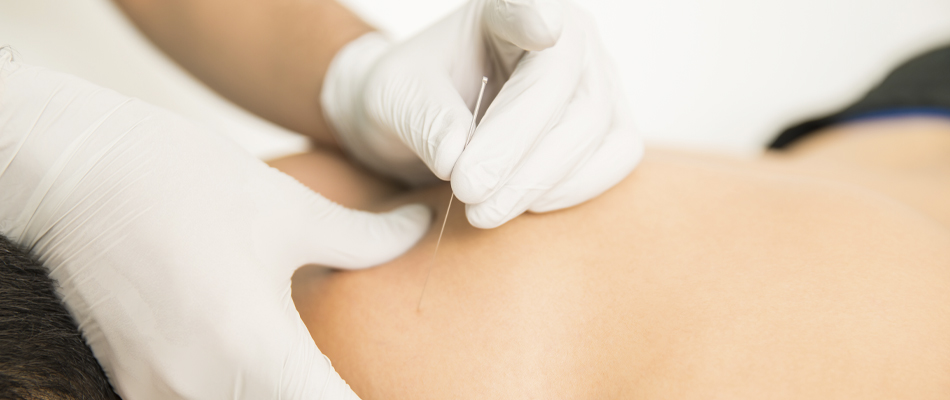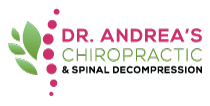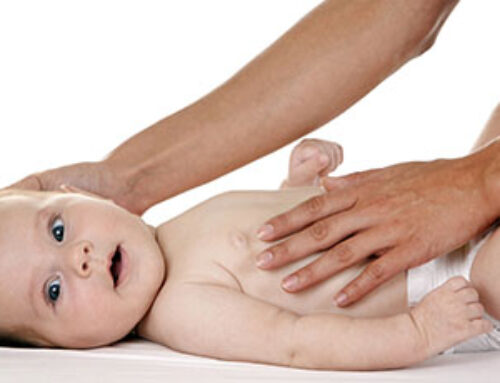
Do you ever experience pain or tightness in your muscles that regular physical therapy just isn’t fixing? You may have more success in treating your symptoms by adding dry needling to your treatment.
What is dry needling?
Dry needling, also known as Intramuscular Stimulation (IMS), is an increasingly popular method of chiropractic care. It involves a thin needle being inserted into the skin to relieve pain in the muscles. As the name implies, no fluid is injected. It is similar to acupuncture, and both have roots in traditional Eastern medicine, but the two are meant for different purposes. Acupuncture is used to unblock energy meridians and promote the improved flow of energy around the entire body. Dry needling, on the other hand, is intended to target specific trigger points, helping the muscular element of pain by breaking up the tight muscle fibers along with scar tissue that is preventing correct healing.
What are trigger points?
Trigger points, also known as knots, are areas of muscles, ligaments, and tendons that have tightened up from overexertion. Depending on which muscles are affected, the pain may also affect other areas, and nerves that may be compressed. Flexibility may be affected as tightness makes the muscles harder to move. Lactic acid may also build up in these areas, causing discomfort similar to what you may feel after a workout. Both temporary and chronic conditions, including whiplash, can cause trigger points.
How does dry needling work?
Before inserting any needles, the therapist will search for the muscle or area of muscles that is causing you pain. As a warm-up, the patient may also be asked to stretch the muscle as best they can. Once the trigger point is identified, the needle is guided until it encounters stiffness or a local twitch response. A local twitch response is a contraction of the spinal cord in response to stimulus. You may have felt something like it in a regular massage. The local twitch response is a sign that the trigger point has been found and the process is working. As the nerves are stimulated and muscles are loosened, tension is released, and your body will naturally begin healing the affected tissues. The process is repeated until all trigger points have been treated. The needle may be left in for up to 15 minutes, but it usually only takes about 5 minutes.
Benefits of Dry Needling
By releasing tension, dry needling can work wonders for your body.
- Cramping is aided. Movement and flexibility are improved.
- Pain is reduced in the long term.
- The release of tension improves movement and flexibility.
- The release of tension promotes improved blood flow and begins the healing of taut muscles, which can accelerate recovery times from injuries.
Did you know that professional athletes trust dry needling? It’s true! A study of female volleyball players showed that for all patients, dry needling improved movement and strength while reducing pain in the long term, without affecting movement in the short term.
We want you to know that dry needling is almost never prescribed on its own, but instead is combined with other treatment methods such as movement-based physical therapy and electrical stimulation, both are offered here at Dr. Andrea’s and are capable of producing noticeable results.
Is dry needling risky?
Having needles inserted into your skin may sound intimidating, but dry needling is an extremely safe method of chiropractic care. Injuries are unheard of, and you will soon find that any brief pain you feel is outweighed by the benefits of better movement. Most patients do not feel the needle being inserted. You may feel some brief, mild pain when the trigger point is stimulated, but over time you will find that the benefits far outweigh any temporary discomfort.
Is dry needling for everyone?
There are a few individuals who should avoid dry needling. Caution should be exercised and parental consent is required in using dry needling on children. As a general rule of thumb, dry needling is not advised for patients under 12, but this will depend on the specific patient, their maturity level, and what they are comfortable with. Dry needling should also be avoided in pregnant women and those with skin lesions or vascular disease at the trigger point.
Dry needling is growing in popularity in the United States after years of success in Europe. It is used as a supplemental treatment when standard methods prove ineffective on their own. It is a faster method than a full massage, often taking as little as 5 minutes compared to 30 minutes. It is also a great option for individuals who have personal or religious objections to using medication. Call 918-364-2225 to speak with Dr. Andrea about treatment plans and see if dry needling can help you.



